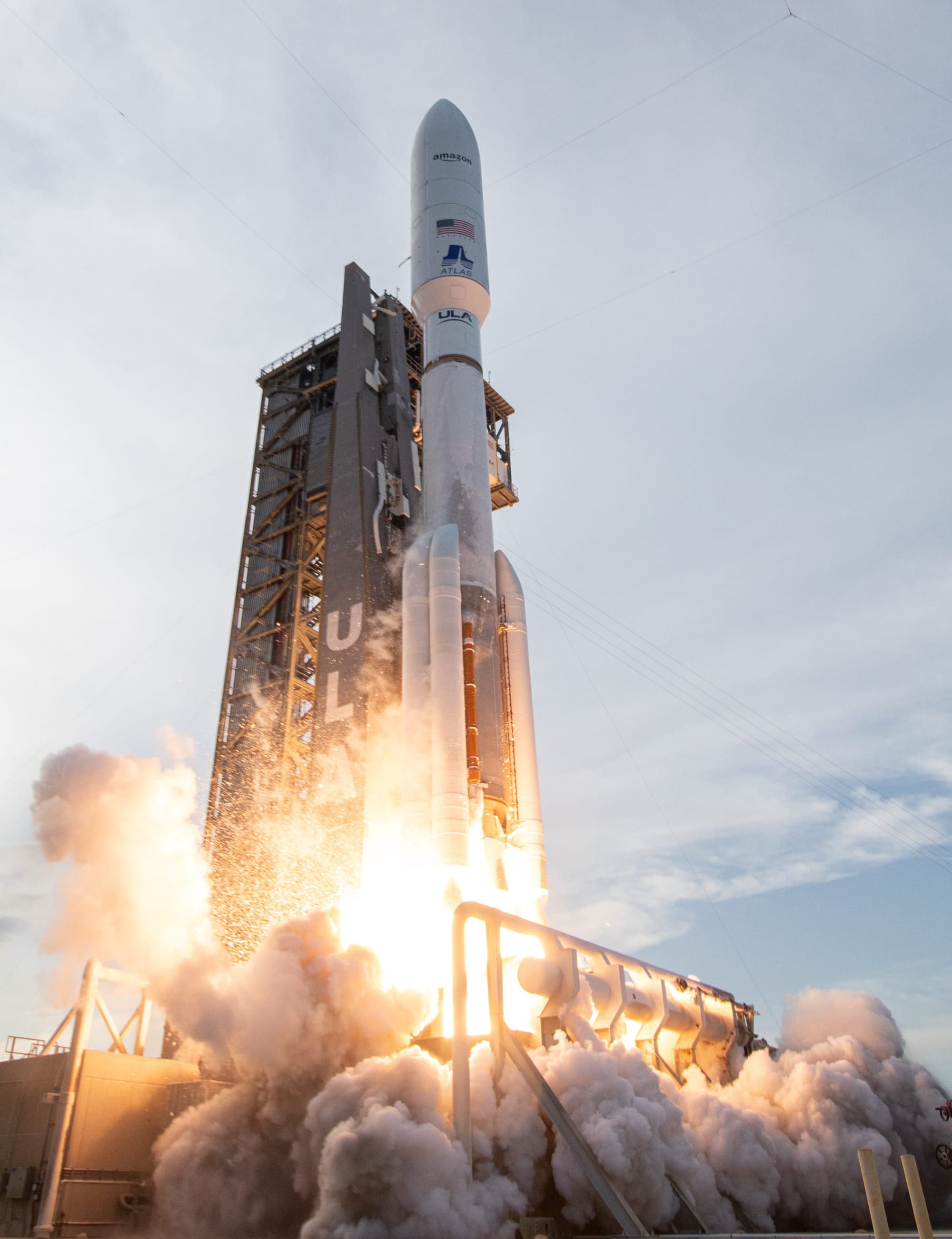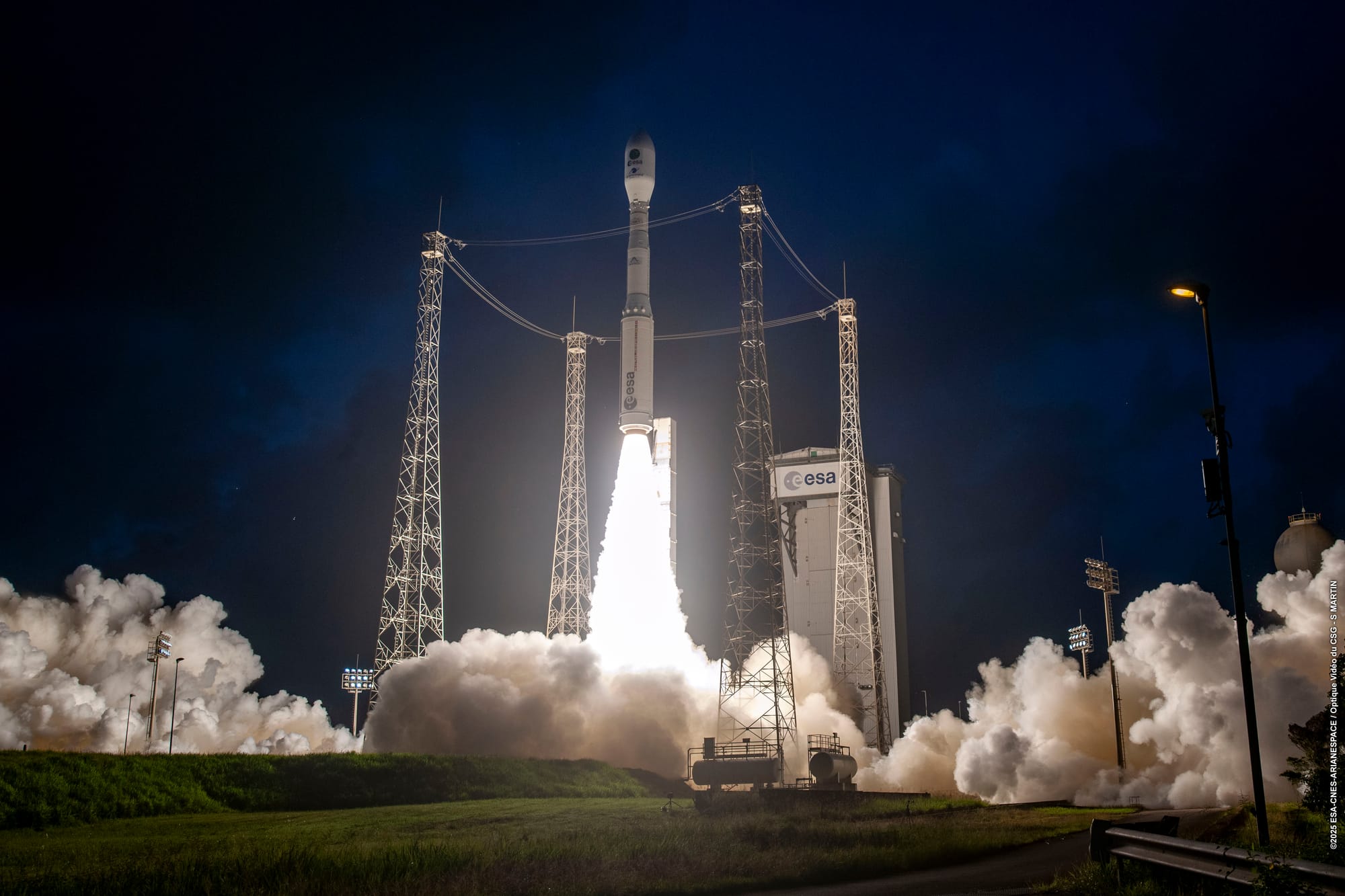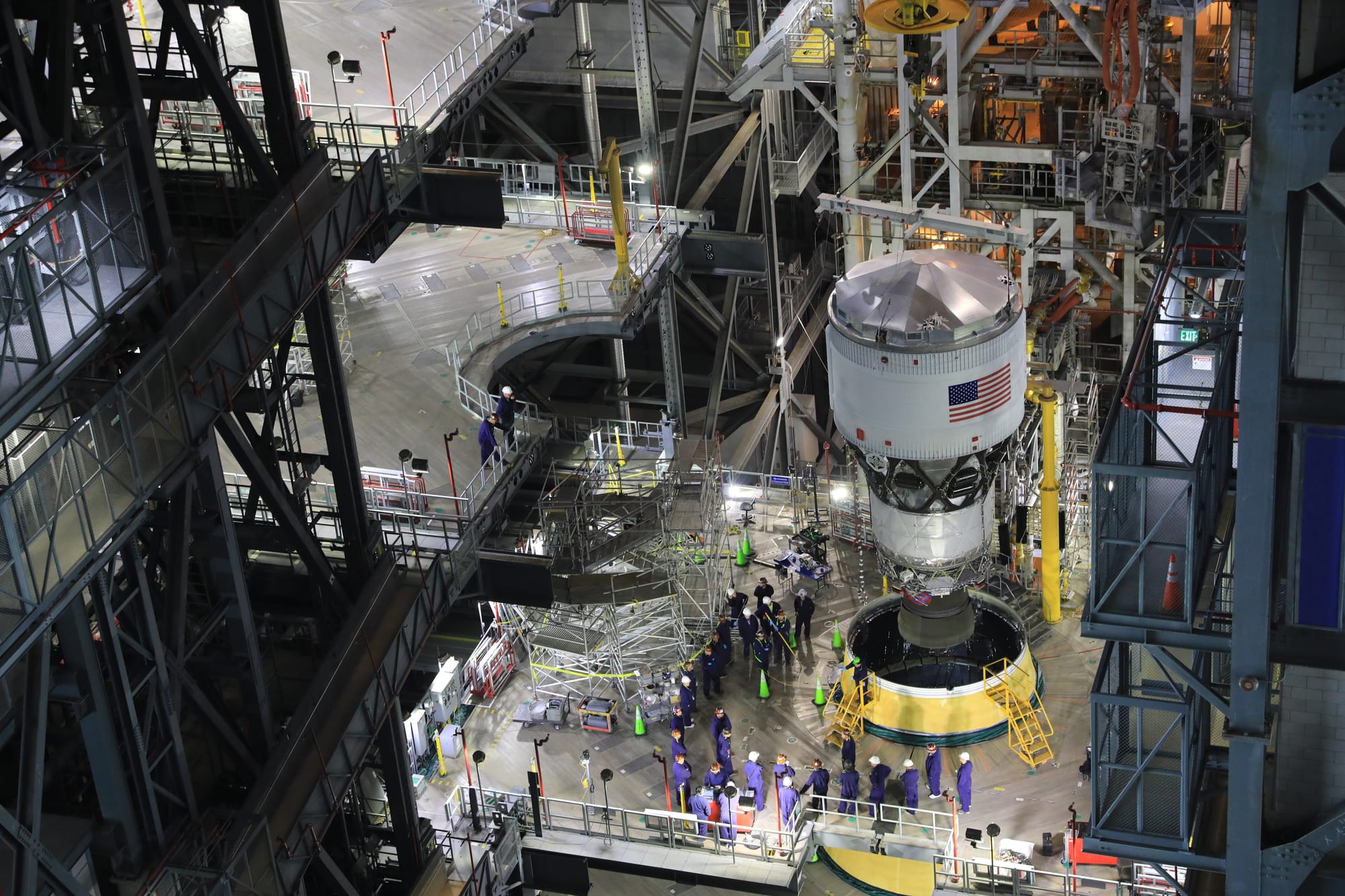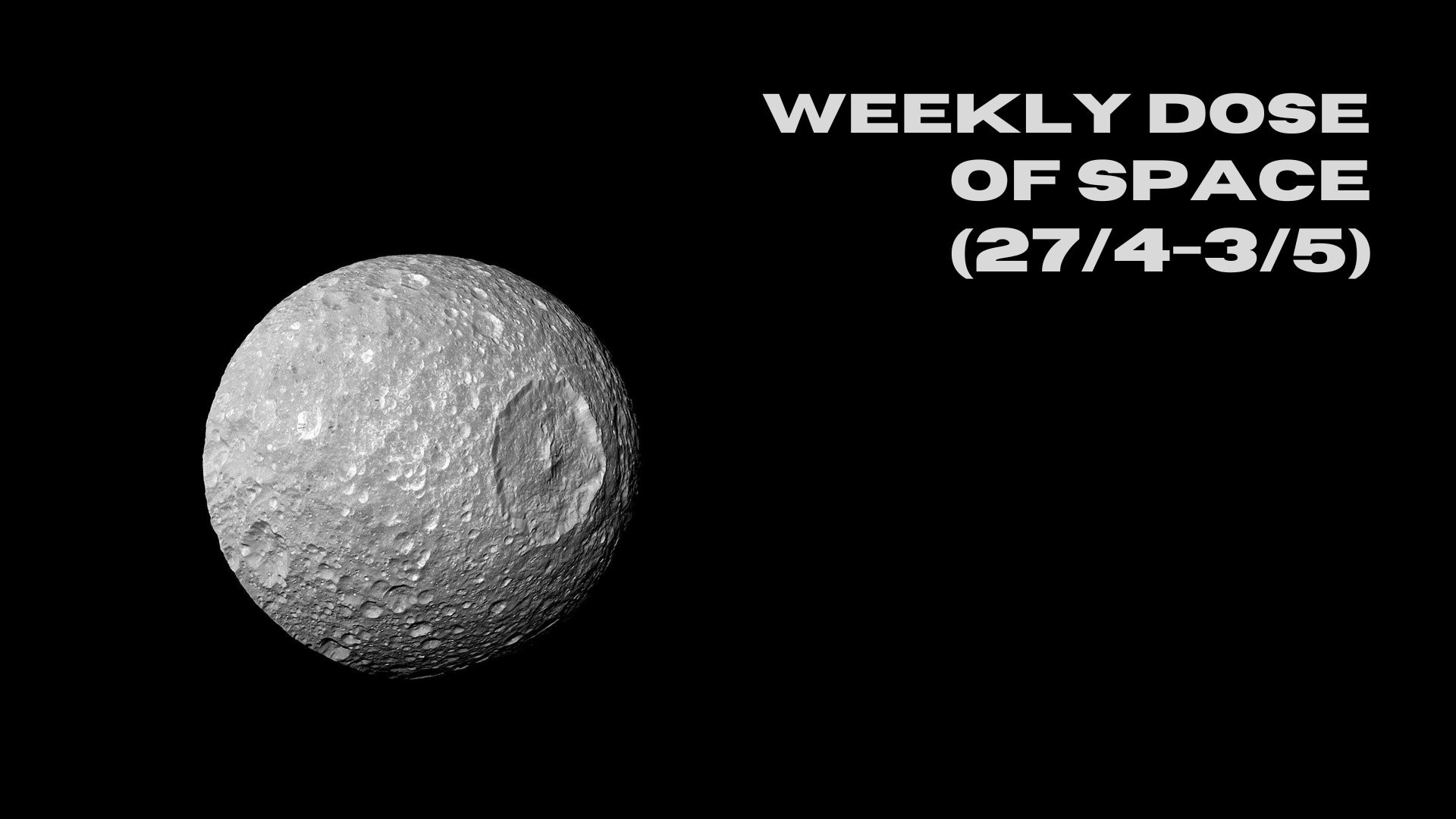Table of Contents
Welcome back to Weekly Dose of Space! This week had nine launches occurring, with satellites for three mega-constellations reaching orbit. News from the week had progress continuing for Artemis II as well as Jared Isaacman getting closer to becoming NASA Administrator. As always, we'll also look ahead to what the worldwide launch schedule might look like next week.
Launches This Week
April 27th - Long March 3B/E with a Tianlian-2-05
A Long March 3B/E launched from Launch Complex 2 the Xichang Satellite Launch Center, carrying the Tianlian-2-05 satellite to a geostationary transfer orbit. Tianlian-2-05 will provide data and communications relay services for China's crewed spacecraft, including the Tiangong Space Station.

April 28th - Falcon 9 with Starlink Group 12-23
SpaceX launched twenty-three Starlink satellites to low Earth orbit atop of a Falcon 9, flying from Space Launch Complex 40, in Florida. Booster B1077 supported this launch, for its twentieth flight with a landing downrange on the drone ship 'Just Read The Instructions'.
April 28th - Long March 5B with GuoWang Group 03
A Long March 5B lifted off from Launch Complex 101 at the Wenchang Space Launch Site heading to a polar orbit with a third batch of GuoWang satellites. Ten satellites were onboard the rocket, and deployed by a Yuanzheng-2 upper-stage.
A #LongMarch5B carrier rocket with a Yuanzheng-2 upper stage launched the third group of low Earth orbit satellites for an internet satellite constellation from the #Wenchang Space Launch Site in southern Hainan Province on early Tuesday (April 29). https://t.co/BMvd2BsTMh pic.twitter.com/H70hYtGRoh
— Wu Lei (@wulei2020) April 29, 2025
The Long March 5B with GuoWang Group 03 lifting off from Launch Complex 101, via Wu Lei on Twitter.
April 28th - Falcon 9 with Starlink Group 11-9
Twenty-seven Starlink satellites were delivered to low Earth orbit by a Falcon 9 flying out of Space Launch Complex 4E, in California. Supporting this launch was B1063 on its twenty fifth flight, landing downrange on the drone ship 'Of Course I Still Love You'.
April 29th - Atlas V with KA-01
An Atlas V launched from Space Launch Complex 41, in Florida, carrying the first twenty-seven satellites for Amazon's Kuiper internet mega-constellation to low Earth orbit. Details on the constellation and future launches are available here.

April 29th - Falcon 9 with Starlink Group 12-10
Another twenty-three Starlink satellites were launched from Launch Complex 39A, in Florida, atop of a Falcon 9 flying to low Earth orbit. The booster for this mission was B1094, landing for the first time on the drone ship 'A Shortfall of Gravitas' downrange.
April 29th - Vega-C with Biomass
A Vega-C blasted off from Ensemble de Lancement Vega at the Guiana Space Centre carrying the Biomass spacecraft, which will measure the density of carbon stored in the world's forests, to sun-synchronous orbit. Despite a minor underperformance of the solid rocket stages, the liquid-fuelled fuelled upper-stage delivered Biomass to its target orbit successfully.

April 29th - Firefly Alpha for 'Message in a Booster'
Firefly Aerospace launched its Alpha rocket to low Earth orbit from Space Launch Complex 2W, in California, with a satellite from Lockheed Martin. However, during stage separation, the second-stages engine nozzle was destroyed leading to underperformance of the rocket, reaching a lower-than-intended orbit.
May 2nd - Falcon 9 with Starlink Group 6-75
Twenty-eight more Starlink satellites were launched to low Earth orbit by a Falcon 9 flying from Space Launch Complex 40. Booster B1080 supported this mission for its eighteenth flight, with a landing on the drone ship 'Just Read The Instructions'.
In Other Space News
Artemis II preparations continue

On May 1st, the Orion spacecraft for the Artemis II mission had its testing and assembly completed by Lockheed Martin, and then was handed over to NASA's Exploration Ground Systems teams at the Kennedy Space Center. Now in the possession of NASA, Artemis II's Orion will undergo further preparations ahead of receiving its launch abort system and being placed atop of the Space Launch System (SLS).
Lockheed Martin's Vice President of Human Space Exploration and Orion Program Manager, Kirk Shireman, congratulated the company's teams, stating:
"This achievement is a testament to our employees and suppliers who have worked tirelessly to get us to this important milestone." – "It's exciting to think that soon, humans will see the Earth rise over the lunar horizon from our vehicle, while also traveling farther from Earth than ever before."
Also on May 1st, SLS's Interim Cryogenic Propulsion Stage was lifted and placed on the Launch Vehicle Stage Adapter. With the stacking of the upper-stage, all non-Orion systems for the Artemis II mission are ready inside the Vehicle Assembly Building.
At the moment, Artemis II will be the first test flight of the SLS rocket, Orion spacecraft, and supporting ground system with crew aboard. NASA astronauts Reid Wiseman, Victor Glover, and Christina Koch, and Canadian Space Agency astronaut Jeremy Hansen will venture around the Moon and back.
With new proposals for the Artemis program, Artemis II will be the mid-point of the program before it concludes with Artemis III.
Isaacman nomination sent to Senate
The Senate Commerce, Science, and Transportation Committee voted on April 30th to advance the nomination of Jared Isaacman, a billionaire repeat space tourist, as the next Administrator of NASA.
The twenty-eight members of the committee voted nineteen to nine to progress Isaacman's nomination to a full vote by the U.S. Senate. All Republican members of the committee voted in favour along with four Democrats, with all nine against being Democrats. Democratic Senator Maria Cantwell voiced skeptical support for Isaacman following the vote, saying:
"Mr. Isaacman’s nomination comes before us with a wealth of business experience and space experience. I do think that innovators at this point in time, with a commitment to keeping onto the Moon mission, is the key requirement that we have to have in this position. While it’s not clear to me where the Trump Administration will ultimately end up on the NASA budget, and I have concerns about some of their proposed cuts today, Mr. Isaacman seems committed to the current plan for both lander redundancies, Space Launch System and returning to the Moon as fast as possible."
Jared Isaacman has a few potential conflicts of interest ahead of becoming NASA's Administrator. He is already a repeat customer of SpaceX's human spaceflight services and has plans to book at least two more missions with his own company, Shift4, holding millions of dollars of SpaceX stock while being a partner too. Online, Isaacman has been an enthusiastic supporter of Musk and Trump, while expecting and supporting the militarization of space, questioning whose interests he will act on behalf of.
What to Expect Next Week
May 4th - Falcon 9 with Starlink Group 6-84
Twenty-nine more Starlink satellites are expected to launch from Launch Complex 39A atop of a Falcon 9 heading to low Earth orbit.
May 4th - Falcon 9 with Starlink Group 15-3
Another Falcon 9 carrying a batch of Starlink satellites, this time with twenty-six spacecraft, is planning to launch to Low Earth orbit from Space Launch Complex 4E.
May 5th - Long March 12 with GuoWang Group 04?
The second Long March 12 is preparing to fly from the Wenchang Commercial Space Launch Site's Commercial Launch Pad 2, possibly carrying the fourth group of GuoWang Satellites.
May 6th - Falcon 9 with Starlink Group 6-93
Yet another group of Starlink satellites is planned to be head to low Earth orbit atop of a Falcon 9 from Space Launch Complex 40.
May 9th - Falcon 9 with Starlink Group 6-91
More Starlink satellites are expected to head to low Earth orbit from Space Launch Complex 40 with a Falcon 9.
May 10th - Falcon 9 with Starlink Group 15-4
From Space Launch Complex 4E another batch of Starlink satellites will once again be atop of Falcon 9 heading to low Earth orbit.







